Luxagraphia is a photographic style or school I have been developing wherein I use light to draw images. It is a way of drawing with light on the photographic plate (film, CCD, &c) to produce an image. In the following assembly (Arrested Development Revisted) the first of the four panels is unmanipulated from which the other three derive. (All other shots in this manifesto are unmanipulated entirely.)
Look through my Darkly Glasses if you are interested in my photography. The luxagraphic photographs should all be tagged with luxagraphia.
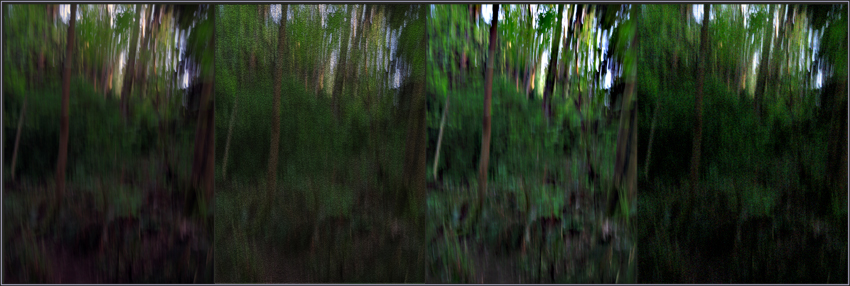
(based on my series Caravan of Dreams (In Four Parts))
Luxagraphia is about motion. In this respect it can be thought of as Futurist. This motion could be camera motion or a combination of camera and subject motion. In this respect it likens itself to the work of modernist painters such as Marcel Duchamp.
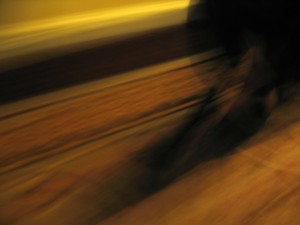
(from my series Striding Ghost)
Some of the images will take on the appearance of Impressionist paintings.
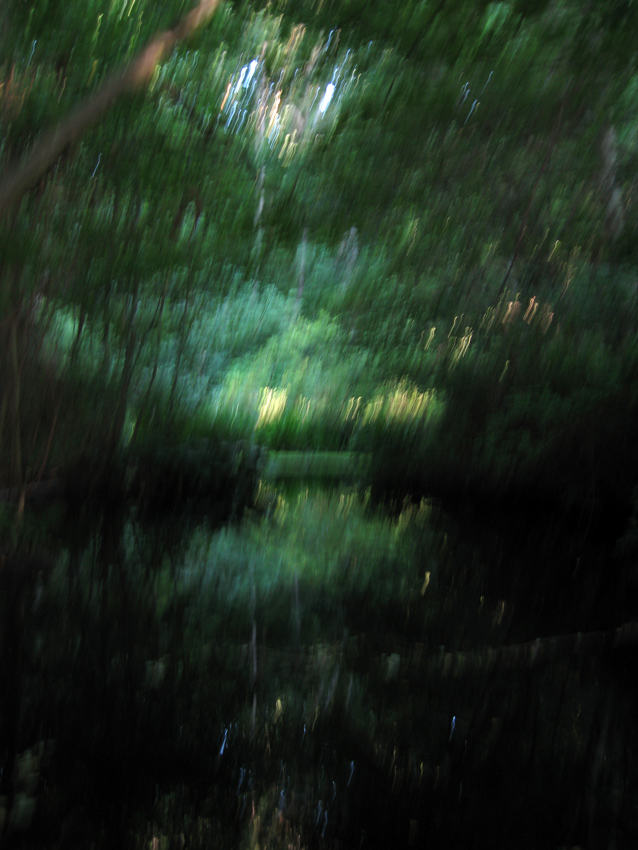
(Originally posted 2006 06 30.)
Others will be much more abstract, perhaps reminiscent of the work of Jackson Pollack.

(Originally posted 2007 06 01.)
These images are not retouched in any way. Photomanipulation software use (such as Photoshop) is limited to those steps necessary to load the image to the Internet: shrinking image dimensions, shrinking file size, perhaps cropping or converting to B&W (also I usually add a small border). I try to make clear for each image precisely what was done.
There is a fundamental and important difference between what I do when I shoot luxagraphically and what is called camera-toss.
Since camera-tossing is utterly random there is no path to reproducibility. Camera toss is just what it sounds like: you push the button and toss your camera up in the air. Presumably it works best in cameras with the longest shutter delays. Presumably it is best done with cameras which are expendable.
In contrast, I have been evolving techniques for shooting in the luxagraphic style which would allow me to (at least theoretically) reproduce some particular shot. The act of reproducing a photograph may be highly impractical and creating again the exact conditions under which the original shot was made could also be undaunting; however, the important matter is that it at least exists as a possibility—as it does in photography in general.
I may take several shots of the same subject, slightly modifying my technique as I do so, in an effort to capture some specific look or feel from that subject. Through my techniques I have discovered ways to evoke certain specific behaviors from particular subjects. And though there is always a random element involved—as there is in all of life—I as the photographer am in the driver’s seat encouraging that random element to obey my photographic will.
I have said it many times: the great works come from a blind collision of luck and skill. We are magicians conjuring order from the shadows. Sometimes the results are very predictable even if they are difficult to control (no computer controlled servos in my wrists, for instance).
(See this painter who also comes from a philosophical position of a collision between the random and the ordered here.)
Consider for a moment that the world is divided into two forces: Will and Fate. There are two forces at work in the universe (or at least two ways of talking about employed forces). One of these I will call Fate and the other Will. Will is what I am able to choose (choose or not choose) and Fate is that collection of things beyond my choice (gravity, time, your will, &c). Fate here delineates the luck while one’s Will defines and shapes one’s skill. Though fate and luck can be influenced by a skillful, willful individual, they exist beyond us and demand a certain degree of respect.
Over all of these elements, that is to say the world around us, we have no direct control. If those elements come together, that is exactly what we call luck. This is what I mean by a collision between luck and skill. It’s lucky that the world is the way the world is, and it is skill that framed and set the camera and hit the shutter. Of course, one can improve one’s odds or influence luck.
In the end all that chaos has to come together. Some might say that chaos is best when completely chaotic. I disagree. Consider two facts. First, if you ask a computer to generate a random string of numbers it will not appear to a human as as random as it could be (the computer has no problem with repeating the same number several times even in a row). Second, the fractal like expressions emerging in the work of Jackson Pollock. Chaos, it seems, is best when it is driven by a little order.
Let’s take a different angle. Is disorder best when it is completely disordered? To the extent to which the random is the disordered, this is equally false. Imagine a system is total disorder. It is a dead system. Life is anti-entropic. The re-injection of order is a re-injection of life and dynamics into that system. It is precisely the interplay between order and disorder, between the random and the sequenced, between life and death, which make a system interesting. Pure life or pure death lose meaning.
Life predicts death; death defines (perhaps a posteriori) life.
The Four Laws of Luxagraphic Motion
As I see the matter, there are four possible types of camera motion into which any luxagraphic shot can be broken down: rotational, panning, zoom, and orbital. (These names will likely change. I cannot find my notes with the names I had earlier. When I do, so it will be.)
To shoot rotationally, spin your camera on an axis through the center of the lens.
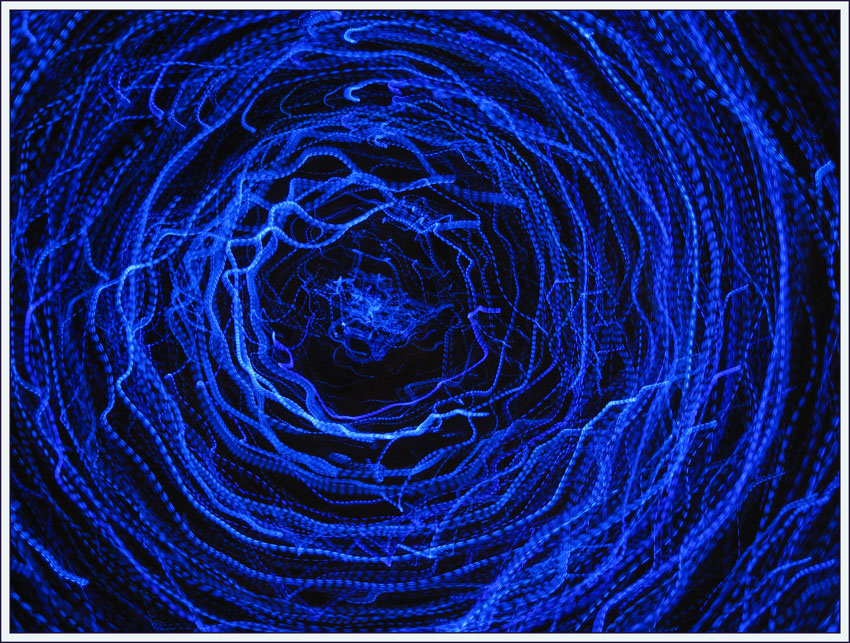
(Originally posted 2007 08 31.)
To shoot panning shots, move your camera on an axis perpendicular to the lens.
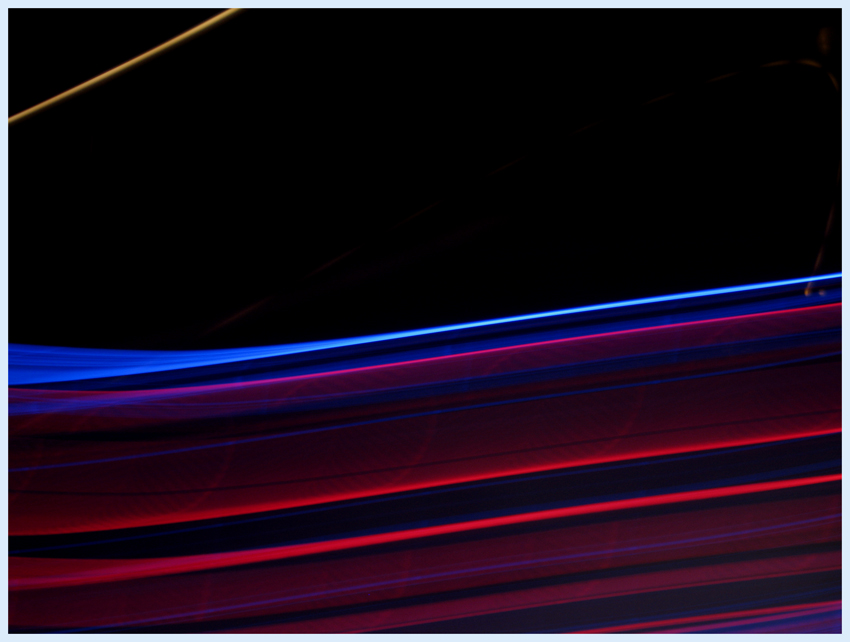
(Originally posted 2007 06 30.)
For zoom shots you have several choices. If you have a zoom lens which will operate while the shutter is active you can use that to zoom in or out. If you have a fixed lens such as I have often used, you will have to move the camera (rapidly) toward or away from your subject or subject lights.
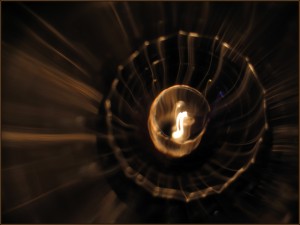
(from my series More to this Shot Glass than Meets the Rye)
And for shooting with the orbital techinique create circular motions or arcs with your camera on a plane perpendicular to the lens.
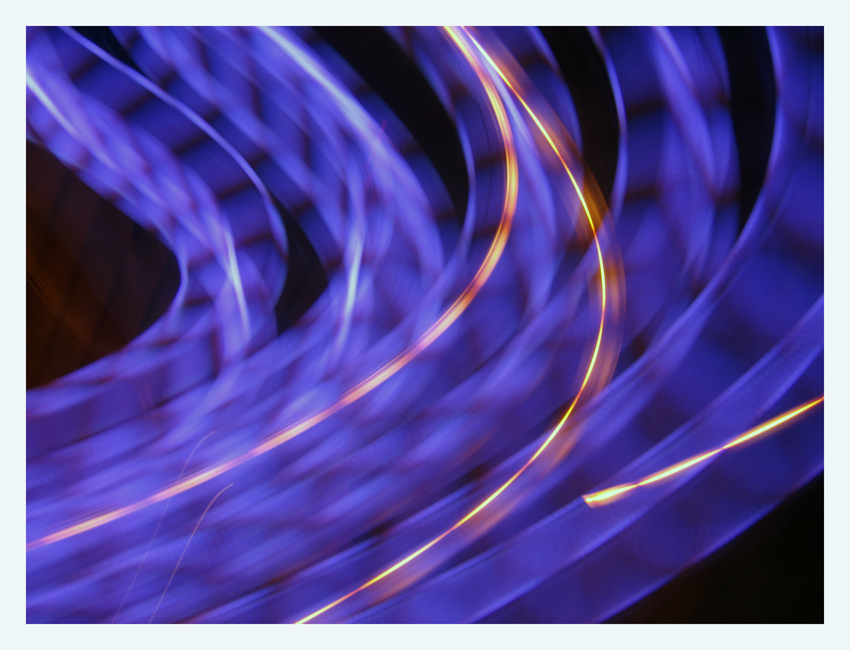
(Originally posted 2007 06 24.)
It is rarely possible to separate these four techniques in practice. Moreover, it is even rarer that I would want to do so. It is precisely the combining of these techniques which makes the most exotic shots possible.
I have also taken to interposing objects between the lens and the subject or subject lights. In A Drop of Fire (above) I used a shot glass over the lens to create some of the radiating lines seen in the final shot as I pulled the camera away from the candle. Also, in Assistant to the Night Manager’s Aria (above) I interposed my fingers so as to break the usually smooth lines the lights will draw on the image.
As a parting note, it is also possible, through careful manipulation of these techniques, to bring together normal photography and luxagraphic photography.

(Originally posted 2006 06 17.)
I am happy to answer any questions you may have. I have encouraged others to explore these techniques and to join my movement. Feel free to try it for yourself.
In essence, I see something—a contrast of light and dark—and I think “ah, that might be something” and I start shooting, experimenting with various hand, wrist, arm, and body motions. Yes, I really do look like a crazy man shooting sometimes. Often I will shoot and shoot and shoot until I finally get what I’m trying for. Other times I throw in the towel deciding I must have been mistaken thinking it was the right scene or subject to shoot (which is terrible). Sometimes I find something that is marvelously fruitful.
Of course my initial judgments are occasionally reversed once I get the image onto a large screen.
Framing and Composition both seem unusual terms when applied to luxagraphic shots because my techniques are reminiscent of what Pollock was doing with paint. Like Pollock I work to get the brush stroke correct (regardless of any appearance of utter random chaos).
Thank you for taking the time to read my manifesto.
Join the movement; get in at the ground floor. If you have a gallery of luxagraphic images, I am happy to link there.
PS:
Here is a relevant discussion of emerging patterns by Numberphile.
In case you missed it above, you can find all of my luxagraphic work by following the tag:
Luxagraphia